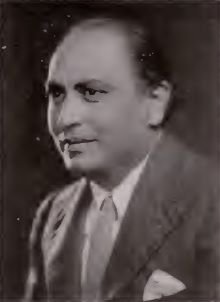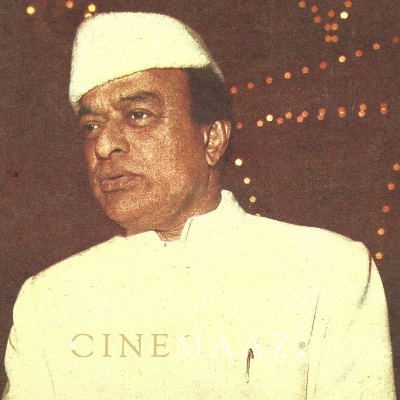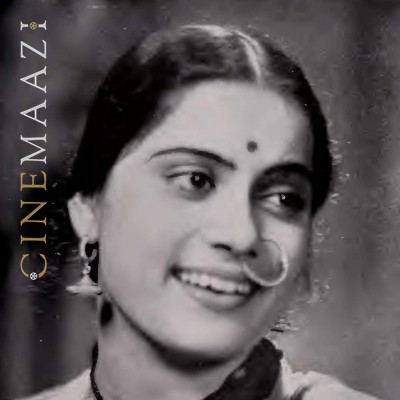Keshavrao Dhaiber

Subscribe to read full article
This section is for paid subscribers only. Our subscription is only $37/- for one full year.
You get unlimited access to all paid section and features on the website with this subscription.
Not ready for a full subscription?
You can access this article for $2 , and have it saved to your account for one year.
- Born: 1890 (Kurkali, Kolhapur)
- Died: 11 May, 1978 (Bombay)
- Primary Cinema: Hindi
- Spouse: Nalini Tarkhad
A pioneer of cinematography in Indian cinema, Keshavrao Dhaiber was born in 1890 in Kurkali, Kolhapur during British Raj. He served in the army as a Lancer for a brief while after which he was employed in the tax department. He befriended Baburao Painter who influenced him to enter the film world as a technician in Maharashtra Films and work in Painter’s film Sinhagad (1923). As a novice in the industry, he worked under the guidance of Vishnupant Damle. He was one of the film technicians who broke away from Maharashtra Films to form Prabhat Studios alongside V Damle, Sheikh Fatehlal, V Shantaram in Kolhapur. As a crucial member of Prabhat Studios, he contributed to the success and growth of it to a national level. It boasted of the finest contemporary stages, art, sound and editing departments.
In 1927, he started a fruitful collaborative partnership with V Shantaram’s directorial debut Netaji Palkar. He co-directed and shot the film. Khooni Khanjar (1930), Udaykal (1930), Rani Saheba (1930), Chandrasena (1931),Ayodhyecha Raja (1932), Maya Machhindra (1932), Sinhagad (1933), Amrit Manthan (1934), and Chandrasena (1935) are some of the notable films they worked on. Apart from co-directing with Shantaram, he also solo directed films such as Zulm (1931), Rajput Ramani (1936), Nandakumar (1938), Akrava Avatar (1939), Ulti Ganga (1942), Bhakta Raidas (1943), Ahimsa Path (1949), and Sudamyache Pohe (1958).
Amrit Manthan’s opening scene is recalled as iconic till date in Indian cinema. It is also the first pan Indian hit film, made under the banner of Prabhat Studio.
Udaykal, a Prabhat Studio production was written by Baburao Pendharkar. In the biopic Shantaram (1986), Udaykal is claimed to be the first film that politicises Maratha ruler Shivaji. The film was based on his military expeditions and was initially titled as Swarajyacha Torun (The Garland of Freedom). The censor boards objection to the name made them drop the name for Udaykal.
The 1933 film Sinhagad’s cinematography by Dhaiber was much appreciated for using torches to light up a screen. This was quite daring as celluloid films caught fire very easily. Following a similar thread to Udaykal, the film showed Shivaji’s lieutenant’s Tanaji’s exploitative raids. The film was based on the classic novel Gad Ala Pan Sinha Gela by Hari Narayan Apte.
Although mostly known or his cinematography and directorial role in films, he had also acted in some films such as Sinhagad (1929) and Sairandhri (1933).
He was married to the actress Nalini Tarkhad. Dhaiber established Jayshri Films in 1935 but the studio disintegrated soon after. Later he joined Minerva Movietone where he directed films such as Akrava Avatar and Ulti Ganga. For a short period from 1943-46, Dhaiberrejoined Prabhat Studios as a production supervisor but moved to Famous Studios thereafter. He tried to establish another production company in Lucknow but the project was as unsuccessful as his first try.
He has also been credited with some documentary work, most of which were Government projects, apart from capturing the coronation of the Maharaja of Baroda in 1940. In 1967, his autobiography called Eka Zindagichi Patkatha was published.
He passed away on 11 May 1978, in Bombay.
References
https://www.facebook.com/filmheritagefoundation/posts/2825298994423686
https://www.facebook.com/1609873936001614/photos/a.1610055682650106/1817348705254135/
https://www.facebook.com/1609873936001614/photos/a.1610055682650106/1839549006367438/
https://www.facebook.com/filmheritagefoundation/photos/a.1395431170743816/1963207057299555/










.jpg)



